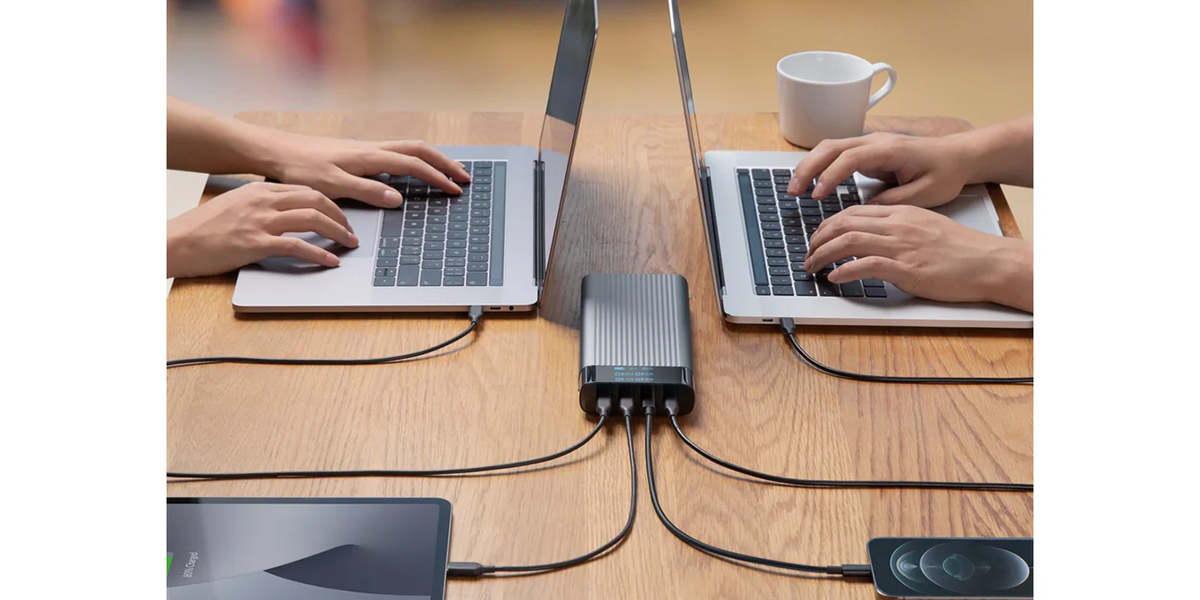A Guide to Portable Power Banks for the On-the-Go Consumer

What do all these numbers mean?
Running out of battery power while on the go can be a significant inconvenience. Portable power banks have become essential gadgets, but understanding their specifications can be daunting. This guide aims to help the consumer to quickly digest the specifications of a power bank to determine if it will meet their needs. Here are some common questions and considerations when purchasing a Targus or Hyper power bank:
Confusion With Units
I purchased the Targus 100W USB-C Portable Power Bank from Dell.com, but the box says 90Wh, did I get sent the wrong unit?
Both the 100W and 140W USB-C Portable Power Banks exclusive to Dell.com will have their electrical energy storage printed on the box – in this case, 90 watt-hours. This can cause confusion if you are unfamiliar with the units related to power and energy. Here are some usable definitions to aid in your understanding:
- Watts (W): Measures the rate of power flow. Higher wattage means faster charging but not necessarily longer-lasting power.
- Watt-hours (Wh): Measures the total energy stored in the power bank. This indicates how long the power bank can supply power to a device.
Both devices will have the same energy capacity, but the 140W device is able to generate higher power flow.
You may also find that power banks list their electrical charge capacity. Take for example the Hyper HyperJuice 245W USB-C Power Bank, which has a charge capacity of 27,000 milliamp-hours. Simply put:
- Milliamp-hours (mAh): Measures the electrical charge stored in the power bank. It indicates how much current a battery can deliver over time, but it does not reflect how long a power bank can charge a device.
Performance
Can the power bank charge my everyday carry devices?
When choosing a power bank, the first thing to consider is whether it can charge your key devices. A portable power bank’s purpose is to transfer electrical power from itself to another device. Here are some typical energy requirements:
- Smartphones: Generally, require between 13 to 18 Wh for a full charge.
- Laptops: Require much more, often between 30 to 100 Wh, depending on the model and usage.
Ideally, the power bank’s capacity should meet or exceed that of your devices.
Besides capacity, the power bank’s wattage should also meet the device’s requirements. For instance, a Dell XPS 13 with a 60W requirement would charge seamlessly with a 100W power bank, similar to being connected to the OEM charger.
How many charges is the power bank capable of?
The number of charges a power bank can provide can be estimated by knowing the energy capacities and efficiency of the charging system. For example, Targus 100W USB-C Portable Power Bank, rated at 90 Wh with 90% efficiency, can charge a laptop with a 40Wh battery approximately two times. Here is a handy calculation to estimate the number of charges:
Number of Charges= (Power Bank Capacity×Efficiency)/(Device Capacity)
The result of this calculation is an approximation based on many variables – remember, there is no free lunch! Modern power banks have complex circuitry to monitor the state and status of the unit, which all need to be powered. There are also thermal losses to contend with. An efficiency of 90% is a starting point, but you must also account for any associated losses of charging system, this includes the device, cables, and connections.
The power bank is discharged, how long will it take to charge it back up?
There are several variables to take into consideration when estimating how long it will take to recharge your portable power bank. For example: percent discharge of the power bank, the number of cycles that the battery has undergone, the power rating of the charger, the quantity of the cables and connections, the ambient air temperature, and so on. Roughly speaking, the Targus 100W USB-C Portable Power Bank is capable of recharging in approximately 3 hours if connected to a 30W charger, and approximately 1.5 hours if connected to a 60W charger or above. There are diminishing returns as you increase the power of the charger due to constraints being placed on the rate of charge. This is done to prevent overheating and prolong the power bank’s cycle count.
Conclusion
Choosing the right power bank involves understanding your specific needs and the device's specifications. By considering the energy capacity, power delivery, and understanding the units of measurement, you can make an informed decision. Armed with this knowledge, you can confidently select a power bank that will keep your devices charged and ready, no matter where you are.


